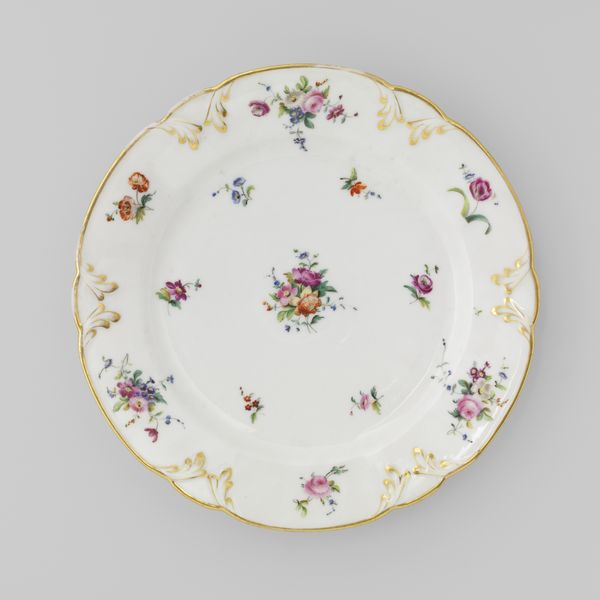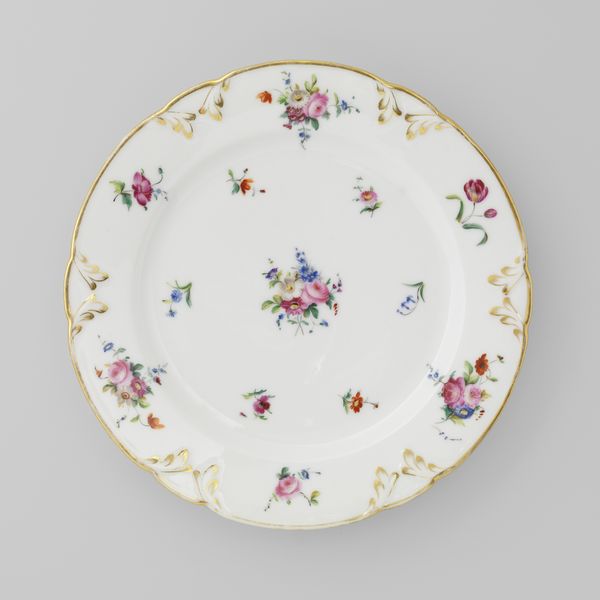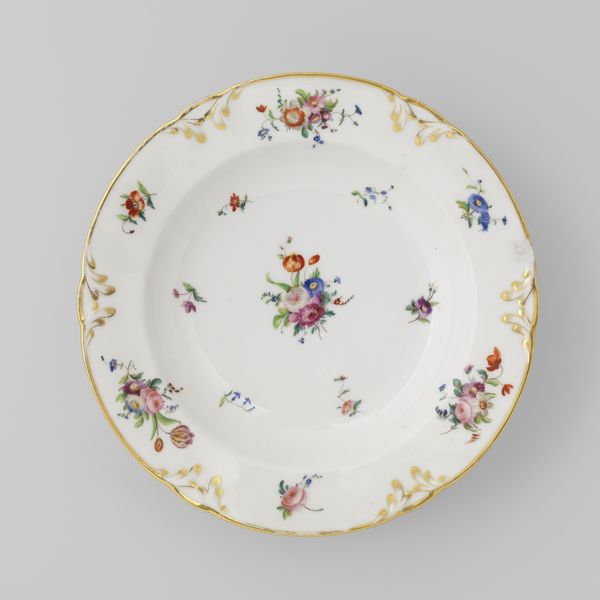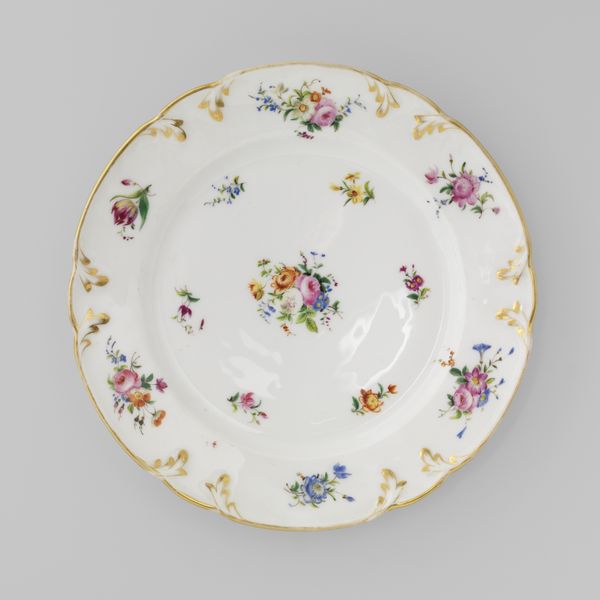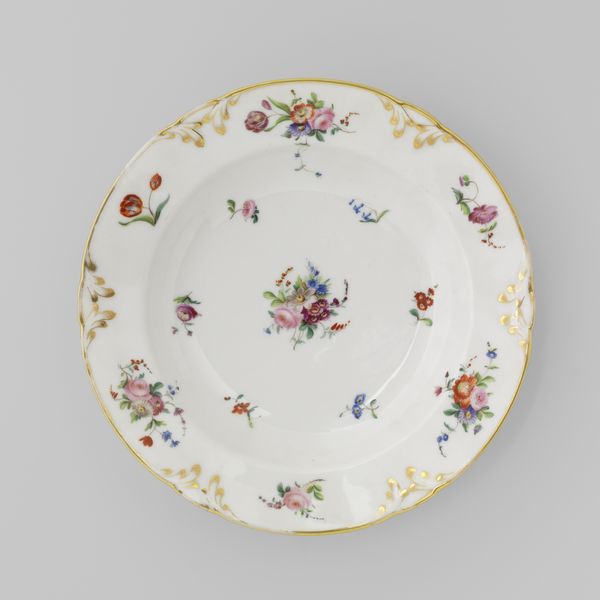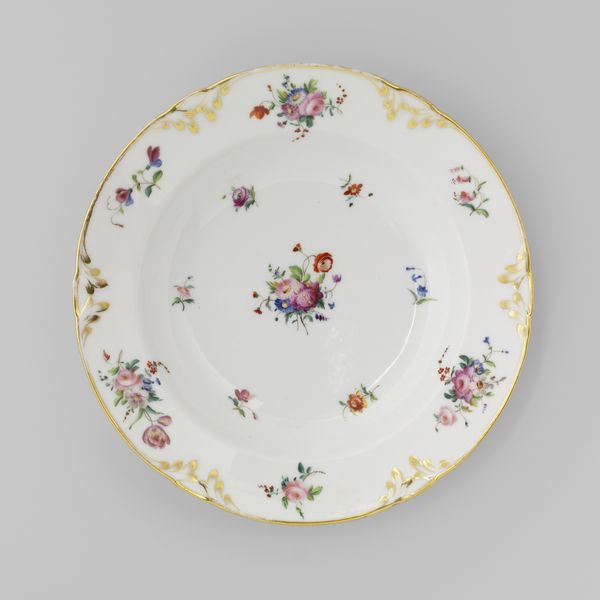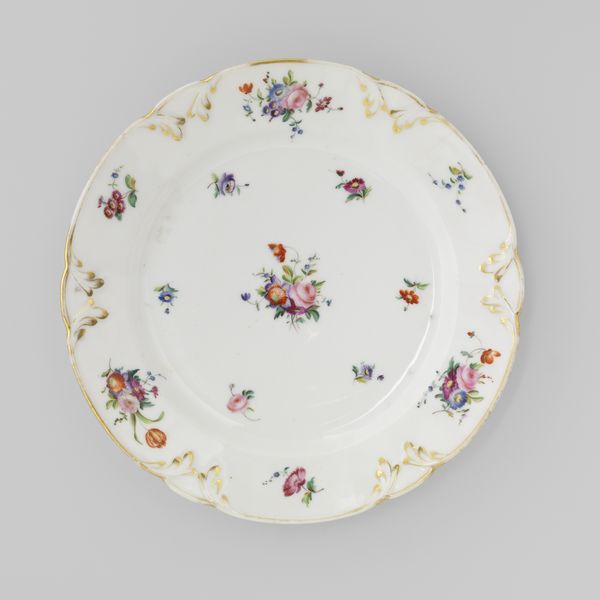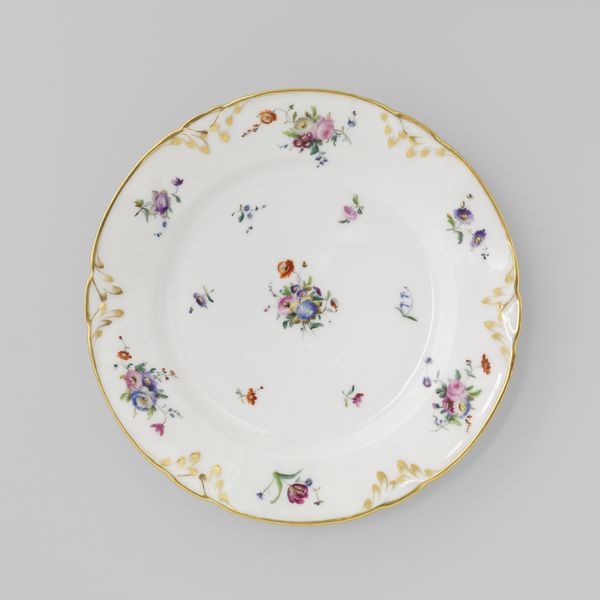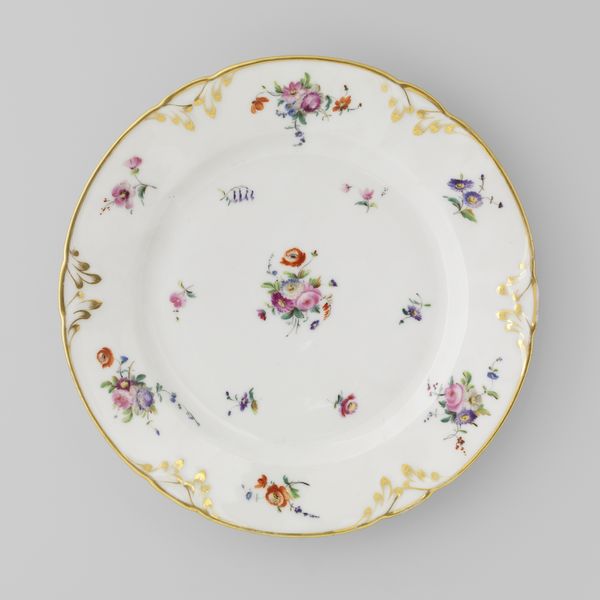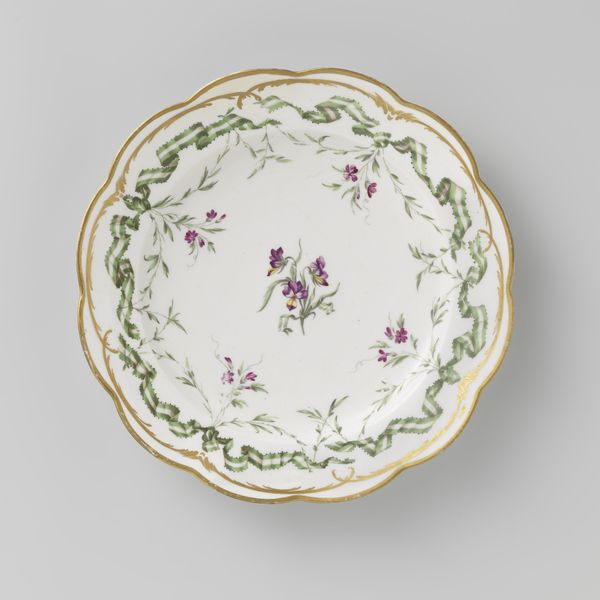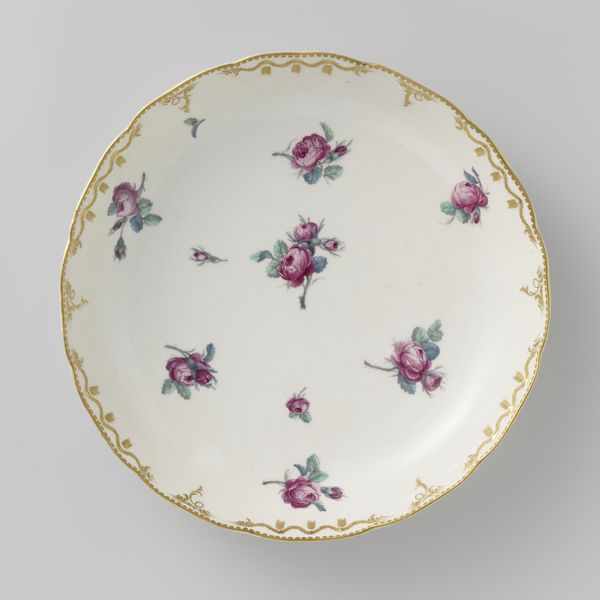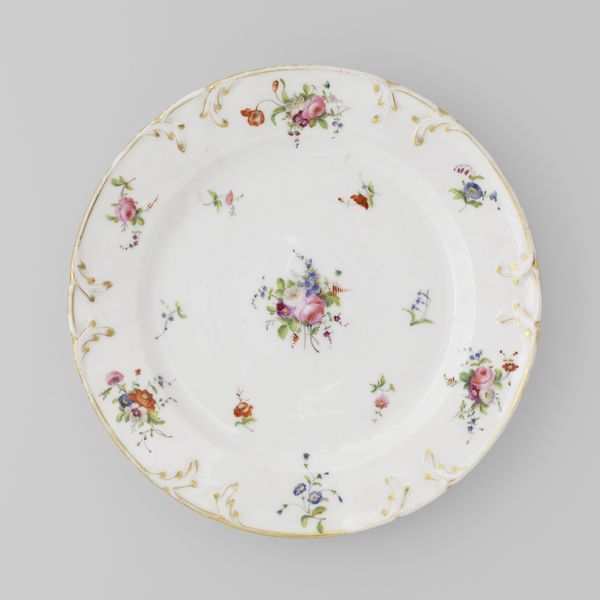
painting, porcelain
#
product photograph merchandise
#
product studio photography
#
circular oval feature
#
painting
#
product promotion photography
#
cake food
#
product fashion photography
#
porcelain
#
culinary art
#
food illustration
#
stoneware
#
romanticism
#
food photography
#
decorative-art
Dimensions: height 3 cm, diameter 24.6 cm, diameter 15.7 cm
Copyright: Rijks Museum: Open Domain
Editor: Here we have "Plate with bouquets and flower sprays," dating back to around 1839, made of porcelain at the Fabriek Dominique Denuelle. It’s charming. Almost like a dessert plate for a fairy tale. All these little floral details… what do you see in this piece that maybe I’m missing? Curator: Beyond its obvious decorative appeal, this plate speaks volumes about the burgeoning bourgeoisie of the 19th century and the power of industrial production. Objects like this, once exclusive to the aristocracy, became increasingly accessible. Consider the Rijksmuseum itself. It was established in this period, reflecting a desire to make art available to a broader public, including artworks intended for domestic display like this plate. Editor: So, it’s less about the flowers themselves and more about what the *plate* represents in a changing society? Curator: Precisely. Think about the political implications of readily available luxury items. How does mass production change the status of such pieces? Are they still considered art, or simply commodities? These are the sorts of questions we can ask. The democratization of art, made accessible in places such as this museum itself, prompts us to examine how society redefines beauty, wealth, and taste, does it not? Editor: That’s a perspective shift! I hadn’t considered the socio-economic implications embedded in something so seemingly simple and sweet. Curator: Often, it's in these everyday objects that the most revealing cultural narratives reside. We tend to look at high art but this artwork exemplifies domestic visual and material culture. Editor: Right. I will consider these societal aspects for future explorations. It completely reshapes how I appreciate these porcelain pieces now! Curator: Excellent. Thinking about an object’s context enhances our appreciation, transforming passive viewing into an active engagement with history.
Comments
No comments
Be the first to comment and join the conversation on the ultimate creative platform.

